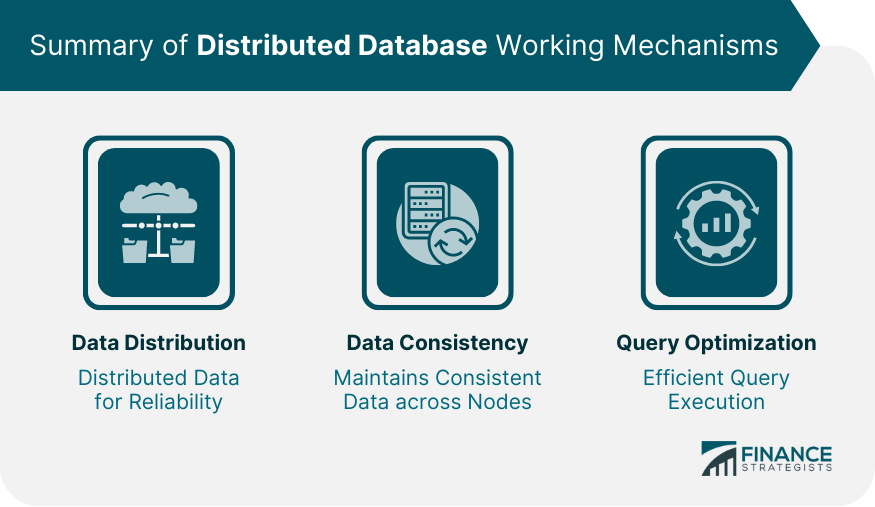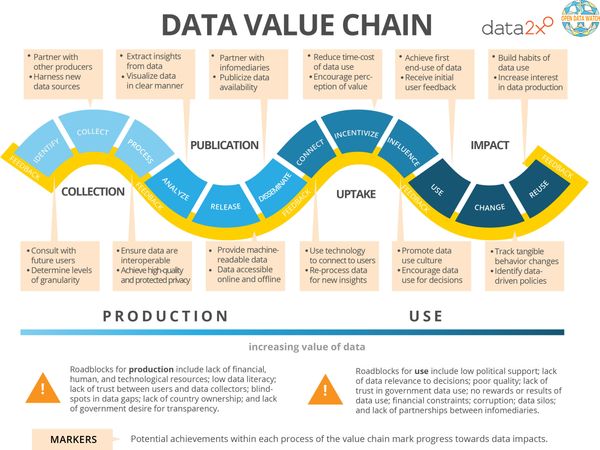Overview
Importance of Backup and Recovery
Backup and recovery of databases is crucial for the successful operation of any organization. It ensures the availability and integrity of data in case of any unexpected events or system failures. The importance of backup and recovery cannot be overstated as it provides a safety net for businesses to recover from data loss or corruption. One of the key aspects of database management is database tuning, which involves optimizing the performance and efficiency of the database system. By implementing best practices for backup and recovery, organizations can minimize downtime, reduce the risk of data loss, and improve overall database performance. It is essential for businesses to prioritize backup and recovery strategies to safeguard their valuable data and ensure business continuity.
Types of Databases
There are different types of databases that are commonly used in the industry. One of the most important concepts in database management is the abstraction layer for databases. This layer provides a simplified view of the underlying database systems, allowing developers to interact with the databases without needing to understand the complex implementation details. This abstraction layer plays a crucial role in ensuring the portability and scalability of database applications. It enables developers to write code that is independent of the specific database technology being used, making it easier to switch between different database systems if needed.
Common Causes of Data Loss
Data loss can occur due to various reasons, and it is essential to be aware of the common causes to prevent such incidents. One of the primary reasons for data loss is poor database performance. When a database is not optimized for efficient operations, it can lead to data corruption, accidental deletions, or system crashes. Implementing database performance tips can significantly reduce the risk of data loss and ensure the integrity and availability of critical information. By following best practices such as regular backups, monitoring and optimizing query performance, and implementing data redundancy measures, organizations can minimize the impact of potential data loss events.
Backup Strategies
Full Backup
Full backup is a crucial aspect of database backup and recovery. It involves creating a complete copy of the entire database, including all data and schema objects. This type of backup provides a baseline for restoring the database to its original state in case of data loss or system failure. The efficiency of the database system plays a vital role in the speed and reliability of the full backup process.
Incremental Backup
Incremental backup is a crucial component of database backup and recovery strategies. It involves backing up only the changes made since the last backup, resulting in faster and more efficient backups. By capturing only the modified data, incremental backups minimize the amount of data that needs to be transferred and stored, reducing storage costs and network bandwidth requirements. Database security is a top priority for cybersecurity professionals, and implementing incremental backup as part of a comprehensive backup and recovery plan is one of the best practices to ensure data integrity and protection against potential threats. By regularly performing incremental backups, organizations can minimize data loss and downtime in the event of a disaster or system failure, allowing for quick and reliable data restoration. Implementing database security best practices, including incremental backup, is essential for safeguarding sensitive data and maintaining the continuity of business operations.
Differential Backup
Differential backup is a backup method that only backs up the data that has changed since the last full backup. This approach can significantly reduce the time and storage space required for backups, making it a more efficient option for database backup and recovery. By capturing only the changes made to the database, differential backup minimizes the amount of data that needs to be transferred and stored. This not only improves the overall backup process but also ensures that the database can be recovered quickly and effectively in case of data loss or system failure. Implementing a regular differential backup strategy is essential for maintaining database efficiency and ensuring the integrity of critical data.
Recovery Methods

Point-in-Time Recovery
Point-in-Time Recovery is a crucial aspect of database backup and recovery. It allows organizations to restore their databases to a specific point in time, ensuring data consistency and minimizing potential losses. When selecting and designing time series databases, it is essential to consider the capabilities and features that enable efficient point-in-time recovery. By implementing a robust backup strategy and leveraging the right tools, organizations can ensure the integrity and availability of their data, even in the event of unexpected failures or data corruption.
Rollback Recovery
Rollback recovery is a crucial aspect of database management. It refers to the process of reverting a database to a previous state in the event of an error or failure. This technique is commonly used to undo any changes made to the database and restore it to a consistent state. Rollback recovery ensures data integrity and minimizes the impact of errors or failures on the overall system. It is an essential practice in database server maintenance.
Media Recovery
Media recovery is a crucial aspect of database backup and recovery. It involves restoring and recovering data from media devices such as disks, tapes, or other storage mediums. In the context of MySQL 8.0, there have been significant improvements in media recovery processes. These improvements enhance the reliability and efficiency of database backup and recovery operations. With the latest version of MySQL, administrators can benefit from faster and more reliable media recovery, ensuring the integrity and availability of their databases.
Testing and Validation

Backup Testing
Backup testing is a crucial step in ensuring the effectiveness and reliability of database backup and recovery processes. It involves verifying the integrity of backup files, testing the restoration process, and evaluating the performance of the backup solution. Performance tuning is a key aspect of backup testing, as it helps optimize the backup and recovery processes to ensure efficient and timely data restoration. By fine-tuning various parameters such as backup schedules, compression settings, and storage configurations, organizations can improve the overall performance and speed of their backup and recovery operations. Additionally, performance tuning enables organizations to identify and address any bottlenecks or inefficiencies in the backup infrastructure, thereby enhancing the reliability and effectiveness of the backup and recovery strategy.
Recovery Testing
Recovery testing is a crucial aspect of database backup and recovery. It involves simulating various failure scenarios to ensure that the database can be successfully restored and recovered in case of data loss or system failures. One of the key factors to consider during recovery testing is SQL performance tuning. By optimizing the SQL queries and database configurations, organizations can improve the efficiency and speed of the recovery process. SQL performance tuning involves analyzing query execution plans, indexing strategies, and database statistics to identify and resolve performance bottlenecks. Implementing effective SQL performance tuning techniques can significantly enhance the overall backup and recovery capabilities of a database.
Validation of Backups
Validation of backups is a crucial step in ensuring the reliability and effectiveness of database backup and recovery processes. It involves verifying the integrity and consistency of backed up data to ensure its accuracy and completeness. By performing regular validation, organizations can identify and address any potential issues or errors in their backup systems, reducing the risk of data loss and improving data security. Moreover, validation also helps in testing the restore process, ensuring that backups can be successfully restored when needed. Overall, validation of backups plays a vital role in maintaining the integrity and reliability of database backups, contributing to robust data protection and efficient recovery operations.
Best Practices

Regular Backup Schedule
Regular backup schedule is crucial for ensuring the safety and integrity of databases. It involves creating copies of the database at regular intervals to protect against data loss or corruption. By following a consistent backup schedule, organizations can minimize the risk of losing critical data and ensure that they have up-to-date copies of their databases. This enables them to quickly restore the database to a previous state in the event of a failure or disaster. Implementing a regular backup schedule also allows organizations to meet regulatory requirements and maintain business continuity. It is recommended to use top data migration tools to automate the backup process and ensure its efficiency and reliability.
Offsite Backup Storage
Offsite backup storage is a crucial component of database backup and recovery best practices. It ensures that data is securely stored in a separate location from the primary database, providing protection against data loss in the event of a disaster or hardware failure. When it comes to backing up and restoring a SQL Azure database, following best practices is essential. These practices include regular backups, testing the restore process, and implementing a reliable offsite backup storage solution. By adhering to these guidelines, organizations can minimize the risk of data loss and ensure the availability of their databases.
Encryption of Backups
Encryption of backups is a crucial aspect of database backup and recovery. By encrypting backups, organizations can ensure the security and confidentiality of their data, even if the backups are compromised. Tackling database downtime with best practices is essential for maintaining the availability and integrity of the database. Implementing encryption measures for backups adds an extra layer of protection against unauthorized access and data breaches. It is recommended to use strong encryption algorithms and secure key management practices to safeguard the backup files. Additionally, regular testing and verification of the backup encryption process should be conducted to ensure its effectiveness and reliability.
Conclusion

Importance of Implementing Backup and Recovery
Data protection is a critical aspect of any organization’s IT infrastructure. Implementing backup and recovery measures is of utmost importance to ensure the security and integrity of databases. In the event of data loss or system failure, having a robust backup and recovery strategy in place can help minimize downtime and prevent significant disruptions to business operations. By regularly backing up databases and implementing efficient recovery techniques, organizations can safeguard their valuable data and quickly restore it to its original state. This article explores the importance of implementing backup and recovery and provides best practices for ensuring data protection.
Continuous Improvement
Continuous Improvement is a crucial aspect of any backup and recovery strategy. It involves regularly reviewing and enhancing the processes and tools used to protect and restore databases. One important area of continuous improvement is the selection and utilization of MySQL data visualization tools. These tools provide valuable insights into the database structure, performance, and trends, allowing administrators to make informed decisions and optimize their backup and recovery procedures. By leveraging the power of these tools, organizations can ensure the integrity and availability of their databases, minimizing the risk of data loss and downtime.
Ensuring Business Continuity
Ensuring business continuity is crucial for organizations in today’s fast-paced and highly competitive world. It involves implementing strategies and measures to minimize the impact of potential disruptions and ensure the uninterrupted operation of critical business processes. One of the key aspects of ensuring business continuity is the backup and recovery of databases. By regularly backing up databases and having a robust recovery plan in place, organizations can quickly restore data and resume operations in the event of a system failure, natural disaster, or cyber attack. This not only helps in minimizing downtime but also protects valuable data and ensures the trust and confidence of customers and stakeholders. Implementing best practices for backup and recovery of databases is essential for organizations to maintain resilience and stay ahead in reshaping industries.
In conclusion, OptimizDBA Database Optimization Consulting is the trusted industry leader in remote DBA services. With over 500 clients and more than 20 years of experience, we guarantee a significant increase in performance for your database. Our team of experts specializes in optimizing transaction speeds, ensuring that your database operates at least twice as fast as before. Our average speeds are often 100 times, 1000 times, or even higher! Experience the difference with OptimizDBA and see why our clients trust us to deliver exceptional results. Contact us today to learn more about our services and how we can help you optimize your database.







